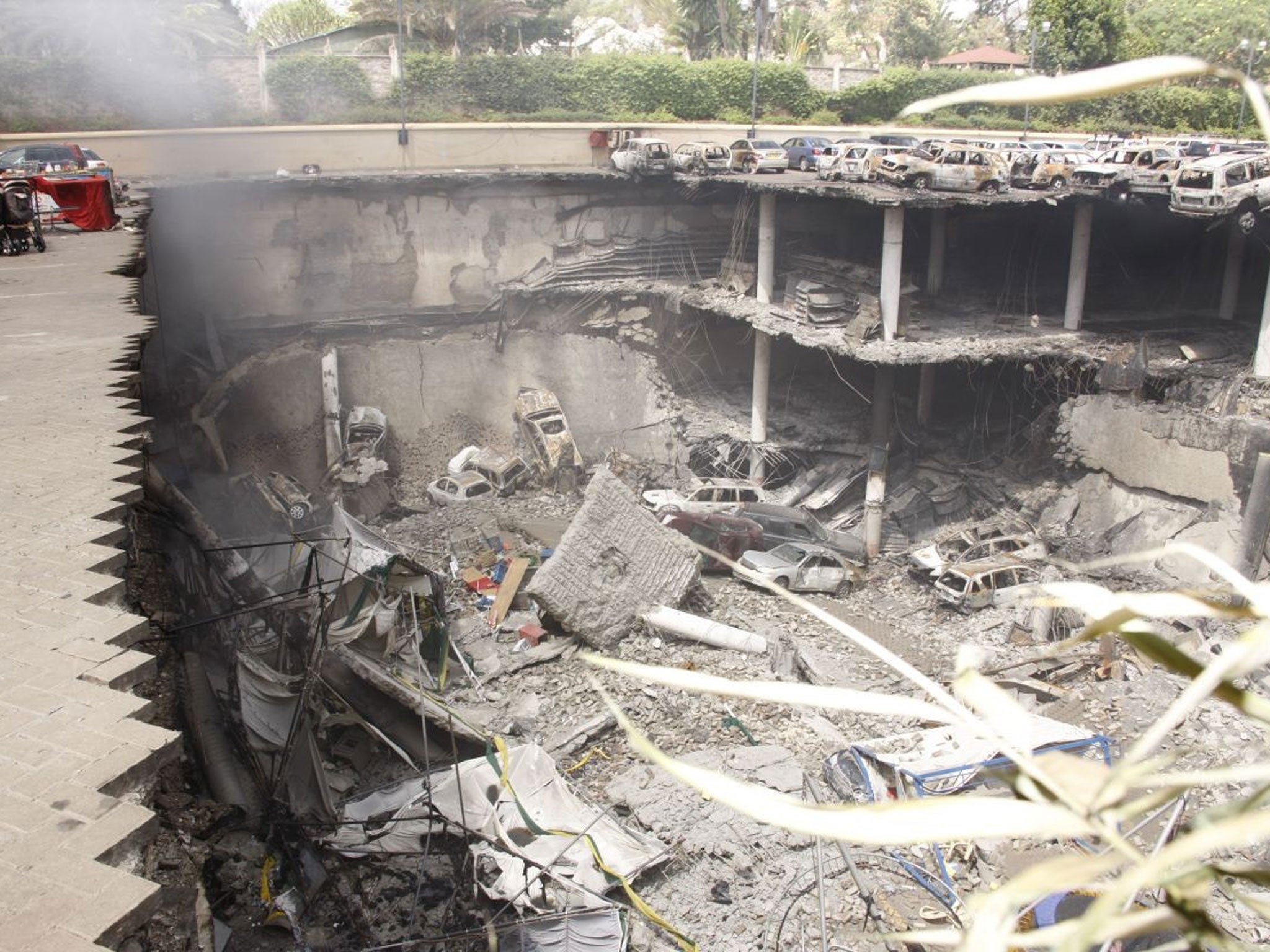Nairobi mall attack: Kenyan forces admit to demolishing part of Westgate centre – and possibly killing hostages in the process
The overwhelming public show of unity appears to be waning

Kenya has admitted that its forces had demolished part of the Westgate shopping centre, helping bring to a close a four-day siege by Islamist gunmen but possibly killing hostages still being held in the building.
When asked if Kenyan military action against the militants had caused the collapse of the mall, a senior government official said, “Yes,” the Associated Press reported.
The surprise admission is likely to stir public anger amid mounting frustration over the authorities' failure to provide timely information about what happened at Westgate, whether any bodies are entombed in the complex following the building's collapse, and who the attackers were.
In the worst terror attack on Kenyan soil since the 1998 US embassy bombings that killed more than 200, gunmen armed with machine guns and grenades stormed the upscale shopping centre a week ago, shooting at everyone in sight. At least 67 people, including six security officers, were killed, but the Kenyan Red Cross says that 61 people are still listed as missing. Five gunmen also died.
Somalia’s radical al-Shabaab movement claimed responsibility for the attack, saying it was revenge for Kenya’s 2011 invasion of Somalia aimed at crushing the Islamist network. Kenya said yesterday that it is still questioning eight suspects and that it had released another three.
Amid a lack of official information about details of the siege, there are indications that the overwhelming public show of unity is beginning to crack as Kenyans demand answers online. Some are now tweeting with new hashtag WeAreOne_dering, a mocking take on WeAreOne that had come to symbolise togetherness.
In one of the first accounts of the operation to retake Westgate, the Daily Nation, a leading Kenyan newspaper, has claimed that a turf war between agencies allowed the militants to regain the upper hand and unleash a new wave of terror.
The report paints a picture of a confused operation that might have ended much sooner had it not been for misunderstandings and poor communications.
Police, with the help of local vigilante groups, succeeded in pushing the militants into a small area early on in the siege, effectively securing the shopping centre. But they pulled out after the military shot dead the police commander in a “friendly fire” incident.
Other units, some of whom were specifically charged with rescuing VIPs, possibly members of the ruling Kenyatta family who were in the mall at the time, pulled back as well, creating a vacuum that the militants used to their advantage to escape into other parts of the mall and continue the slaughter.
After some delay, the police took charge of the operation, but the newspaper reported that special forces agents carrying out the actual assault on the militants refused to take orders from the police chief.
It was towards the end of the operation that a part of the mall is thought to have collapsed – a situation only made clear late Tuesday when President Uhuru Kenyatta addressed the nation. Officials initially suggested that a fire started by the militants had caused structural damage to the complex, leading to its collapse.
That explanation met with scepticism, prompting speculation that Kenyan forces had deliberately blown up the mall either to end the siege, or to end the suffering of hostages amid unverified accounts of rape and torture. The official who confirmed Kenyan responsibility for the collapse said that rocket-propelled grenades had been used in the assault on the militants.
Interior Minister Joseph Ole Lenku has insisted that there are only a few bodies left in the mall, playing down speculation that hostages were still being held in the latter stages of the siege. He cautioned on Wednesday that it would take at least a week to comb through the rubble to gather evidence and determine the number of dead.
Join our commenting forum
Join thought-provoking conversations, follow other Independent readers and see their replies
Comments